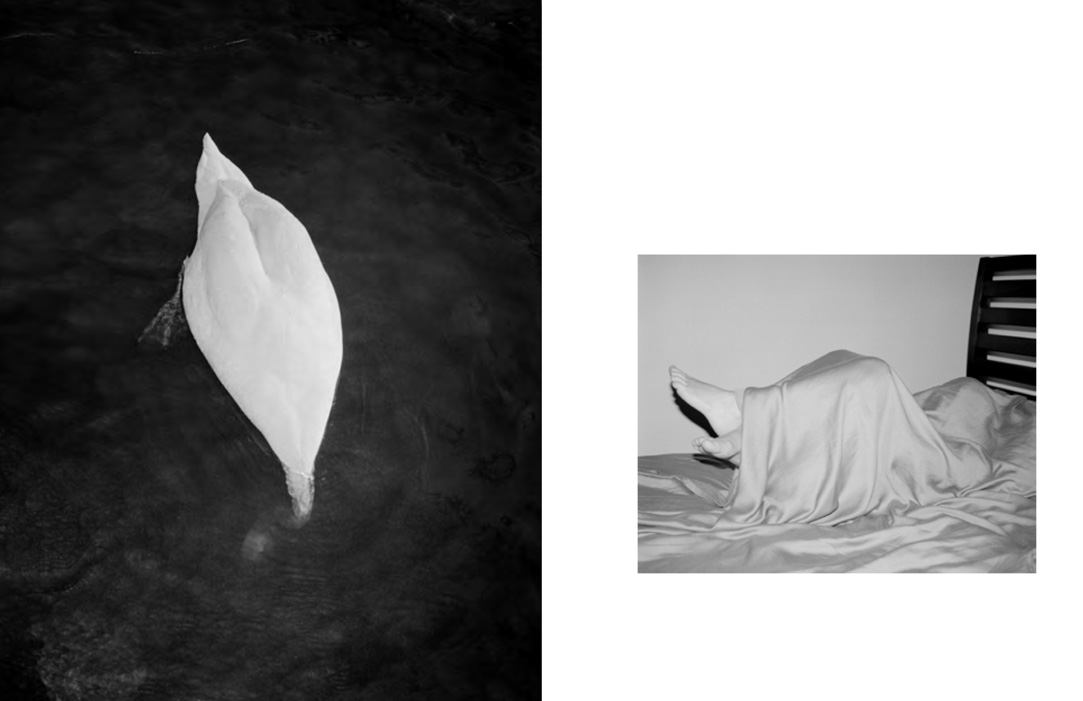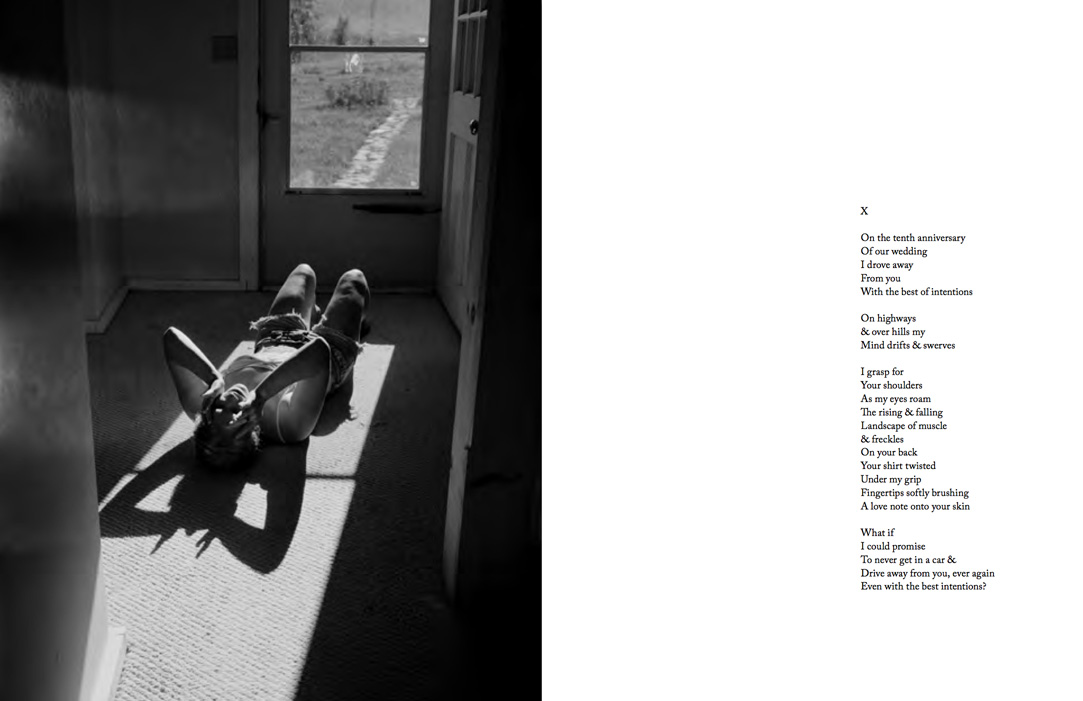To understand how to identify a narrative and understand the design process of photobook making before making my own I read varies texts and articles to see other peoples views and information.
In the article Identifying the Story: Sequencing isn’t narrative written by Colin Pantall, he focuses on creating narrative within photobooks and then sequencing the photographs and book designs to tell the story and work well with the narrative. He also explained he found it quite difficult to sequence his book as he tried lots of different approaches such as: ‘hronology, geography, family, resemblance, art history, season, colour, form, tone, flora, expression, dress, climate, mood, symbolism and material.’ He admits that sequencing was a ‘gradual process’ and he found it fairly hard, as none of these made a narrative. He explains that what actually made the narrative was identifying what the story was about. This links to creating ‘all the structures through which the story can flow and the structures plus the story creates the narrative.’ He refers to Ania Nalecka’s workshop where she asks in three words what your story is about- which to me seems extremely difficult to describe everything in just 3 words. Colin describes his book is: “the story of me going out into these environments with Isabel, it’s my identification with these places, it’s me forming a relationship in these places, and the sense of loss that I experienced as Isabel grew up.” This can be shortened to 3 words: Identification, relationships and loss. I decided to try this myself as I my 3 words would be: Change, Absence and Fate, which are 3 common words I will be referring to in my essay.
Another source I have looked at Joerg Colberg’s book, which consider the many aspects of photobook making, which is divided into 5 parts explanations online part 1, part 2, part 3, part 4, part 5. He explains that photographers looking at making a book can not done, ‘without considering its content’- this suggests that the layout and structure of the book is influenced by the subject of the book itself, which supports what Colin also mentioned in his blog. He also discusses the various properties, which book makers are ‘advised to pay careful attention to’ these are size, weight, choices of materials, type of binding, etc. In the first series of articles, he looks at production choices, in particular how a book is bound, by using more than one book for any given type of binding. He refers to the feel and smell of the book to be important as well as the look of the book (layout, the images themselves, colours, size, structure, text and title etc) given we have to touch photobooks when we look at them, we feel how that handle. We feel how they react to us turning their pages and we feel how easy or difficult the handling is, which is a key concept within his text. He ‘derives deep pleasure from photobooks where the form of the object and its intended function work together.’ Stressing that the book does not have to look fancy or have a particular layout as long as it has a correlation to the concept of the book. He feels most Photobooks tend to consist of a larger number of pictures, which are shown in a particular sequence for any number of reasons. These reasons can be incredibly complex, in particular if they’re driven by ideas of narrative, or they can be quite simple (remember, simple isn’t bad — simplistic is). This is the basic approach adopted by George Georgiou‘s Last Stop , who photographed through the windows of buses in London, the idea of the journey becomes quite obvious. In reality, there could have been quite a few separate journeys, with the presentation in the book being a fictional trip. ‘But it also doesn’t matter so much whether the presented journey is real in a documentary sense or in a metaphorical sense.’ He also refers to accordions within books, which can also be referred to as leporello or concertina books. He also discusses how to make these by hand ‘To make a very basic accordion book, all you have to do is to fold a long piece of paper into smaller sections, and you got your book. The devil, of course, is in the details, since you’ll need to fold the paper carefully, so your book won’t be irregular or even start twisting. Folding a long piece of paper is one option of making an accordion. Usually, these types of books are produced from shorter sections that are taped or glued together.’

He then continues to look at unusual binding choices, one of these is Spiral (or coil) binding he feels this looks cheap and ineffective most of the time so advises photobook makers to produce a physical dummy to make sure this is how you would like your book to turn out and to avoid mistakes, especially for this type of technique. He also mentions this might be a good way of practicing the layout of the book, making sure you are happy with the structure even if you do not use the spiral bind for your final book. There are two types of spiral binding, which are spiral/coil binding and double-loop-wire binding. Simply, a single spiral holding the book together, and the material could be either plastic or metal. On the other hand, the double-loop wire uses metal, and there are two loops going through each of the holes, this is less flexible and allows for pages to possibly escape, something that’s impossible for the single spiral, unless the page gets torn out. Much like the accordion, the spiral has its uses. Unlike the accordion, a spiral probably needs to be adopted more for the aesthetic it comes with than the function it offers. He feels ‘as the final form for a book, I quite like the spiral, but I feel that it’s a lot easier to make a bad spiral-bound book than an accordion, say. You really want to think it through before you commit to it.’ These more unusual binding types are interesting and as a viewer you notice them so much more in a busy self of books.
He tells his viewers that the simplest way to make a book is to take a piece of paper, to fold it in half. If If you want your book to have more pages, you can add them by folding more pieces of paper and inserting them. If you don’t want the book to so easily fall apart, run two or three staples through the “spine,” and you’re all set. This is how you make a simple, basic and easy book. He uses Donald Weber‘s Interrogations as an example as he uses a pamphlet style book, which was an idea driven and inspired by a ‘basic police report.’ Pamphlets can be seen as useful and have ‘good properties’ as you can stack as many different types, styles or weights of paper as you want to create your book, this type of mixing can become difficult in other types of binding. The downside to pamphlet is that you need to plan the book carefully, he gives the example of ‘Let’s say you think early on in your book you need two pages of a very different paper. So you’ll add it. What this means, though, is that given it’s a pamphlet book, there will also be two of those pages very late in the book.’ A pamphlet can look homely and precise- this may be the feel you are going for within your project so making a pamphlet which you can sew together or staple together could reinforce the feel and story you would like to tell.

He discusses the alternatives to holding the pages together if you don’t like the idea of the binder. These could be to ‘run some staples through the stack of paper.’ This is how the 1945 abridged softcover version of Weegee’s Naked City that was produced this way. Its cover, a just very slightly heavier paper stock, wraps around the stapled stack of paper. Another technique is Stab Binding, which is described ‘ instead of a hole punch and a pre-made binder, you make a series of smaller holes through the pages, and the book is held together with binder’s thread. ‘ This is unlike other binding techniques this is using thread not plastic or metal. The limitations of this is that you lose some of the image as the holes can’t not be close to the edge as this make the book unstable. An example of an artist who uses this is Kosuke Okahara’s Vanishing existence this particular book is maybe an even better example of stab binding. He advises bookmakers to be very specific in their intent, and that the intent is made to work with the binding. ‘In a sense, stab binding is a great way to make books that are even just aesthetically intensely pleasing.’ Of all the binding types I can think of stab binding is the one that commands most attention on its own.

He then focus on aspects of photobooks, which he feels ‘appears to have commanded more attention than binding.’ This is the use of different types and sizes of paper. He uses the example of Christian Patterson’s Redheaded Peckerwood ,which showed that the pages in a book didn’t necessarily all have the same size. This is a simple way to organise information in a tactile and/or visual order, the difference in size and material might contribute to the overall narrative of the book and therefore make sense to include this technique. In Peckerwood’s book, the different sizes support the idea of the facsimile, which supports the underlying message. He admits this is probably easier to produce if their handmade books and also says if they decided to do this digitally, high costs might be involved. He looks at important questions such as ‘is what I’m thinking I should have feasible? Can it be made, and can costs be kept under control?’ Also equally important question is: ‘does this actually make sense? What purpose do these different types of paper and/or page sizes serve?’ He finishes with making a statement about a photobook designer: ‘A smart and experienced photobook designer will be able to come up with a design/production that will adhere to the budget.’





























